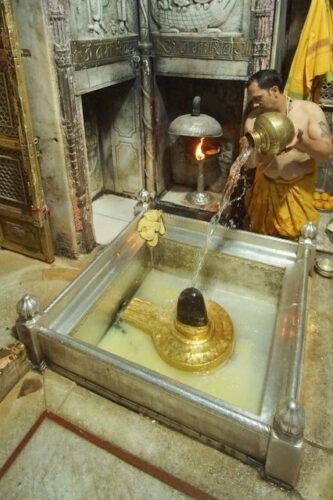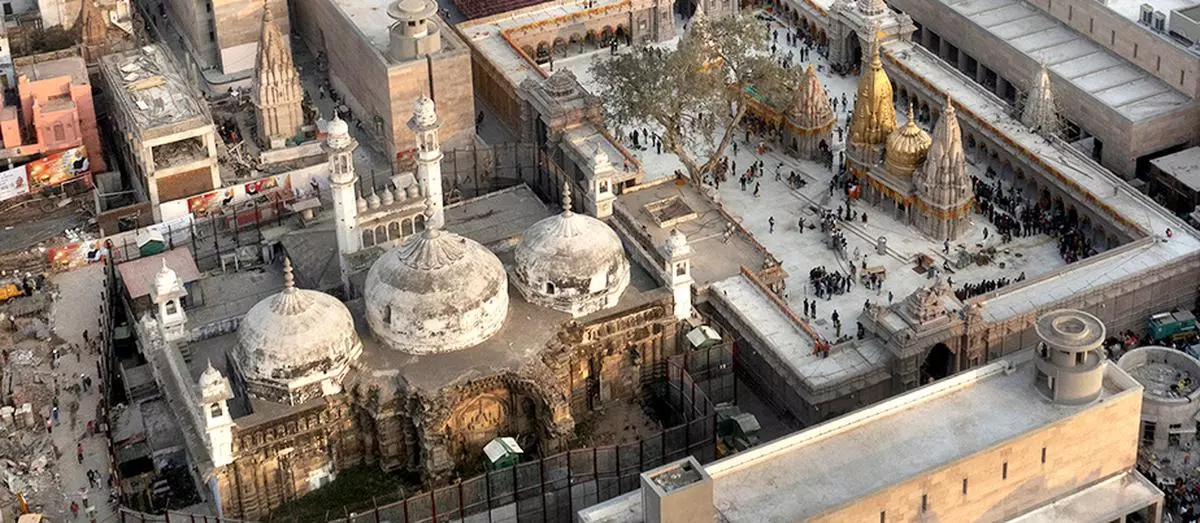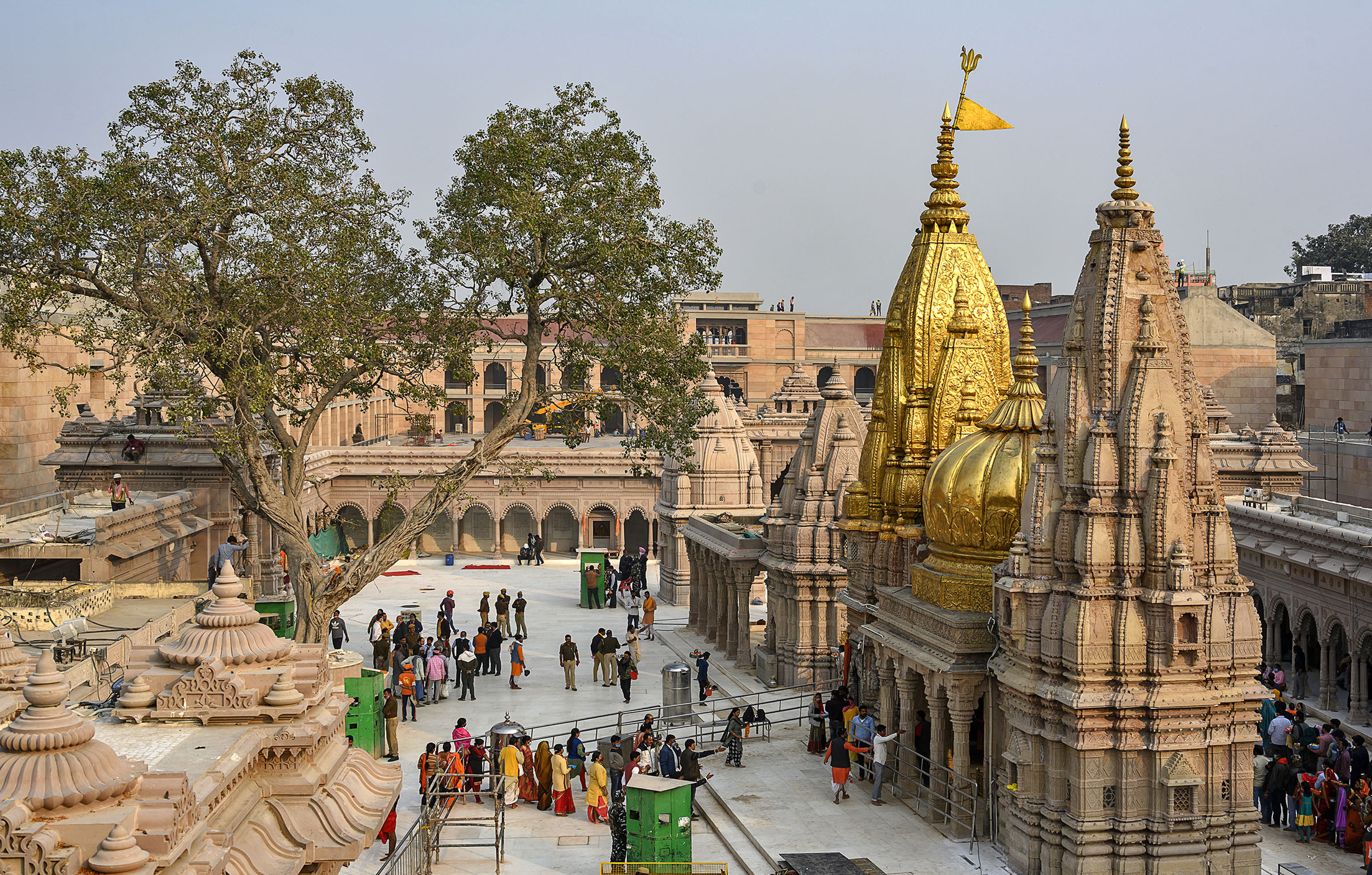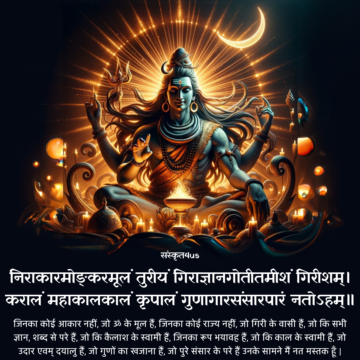- You have no items in your shopping cart
- Continue Shopping
Shri Kashi Vishwanath Temple History, Aarti and Darshan Timings


The Kashi Vishwanath Temple, located in the sacred city of Varanasi, is among the oldest and most venerated Hindu temples in India. It serves as a profound symbol of India’s rich spiritual and cultural legacy. Spanning several millennia, the temple has borne witness to the fluctuations of empires, the pilgrimage patterns of devotees, and the unwavering devotion of countless worshippers. In this in-depth exploration, we will meticulously uncover the temple’s history, tracing its origins, evolution, and significance within the Hindu faith. This journey aims to not only unveil the architectural splendor of the temple but also accentuate its deep-rooted spiritual and cultural importance.
The Kashi Vishwanath Temple has ancient origins, deeply rooted in the history of the legendary city of Varanasi, also known as Kashi or Banaras. Kashi, esteemed as one of the seven holiest cities in Hinduism, is revered as the dwelling place of Lord Shiva, the cosmic destroyer and transformer.
The temple’s history is said to stretch back to time immemorial, documented in various Hindu scriptures such as the Skanda Purana and the Kashi Khanda. The sacred Kashi Vishwanath Temple is one of the 12 Jyotirlingas and it is written in the Shiv Mahapuran that Kashi is the place where the first Jyotirlinga took form. According to legend, the Jyotirlinga was established at this sacred site by Lord Shiva himself. This Jyotirlinga is believed to embody divine power, attracting devotees from around the globe.
According to legends, A sincere devotee can only get freedom from death and Sansar by worshipping Shiva. Devotees come from far and wide to offer their prayers and seek the blessings of Lord Shiva. Lord Shiva gives the Tarak Mantra to every person who dies in his Avimukta Kshetra in Kashi.
Kashi is said to be situated on Lord Shiva’s three spokes and not on Earth, according to the Shiva Mahapurana. The city is also known as “Avinashi” since it is thought that even during the Pralay period, Lord Shiva will hold Kashi on his Trishul and prevent any damage from being done to it.
 The Kashi Vishwanath Temple, also called the Golden Temple, is a masterwork of construction with a 15.5-meter-thick gold Chattra plating on its dome. The temple’s primary Shivalinga, or main deity’s idol, which is housed in a silver altar, is 60 centimeters (24 inches) tall and 90 centimeters (35 inches) in circumference.
The Kashi Vishwanath Temple, also called the Golden Temple, is a masterwork of construction with a 15.5-meter-thick gold Chattra plating on its dome. The temple’s primary Shivalinga, or main deity’s idol, which is housed in a silver altar, is 60 centimeters (24 inches) tall and 90 centimeters (35 inches) in circumference.
It is believed that King Harishchandra, who was renowned for his staunch commitment to justice and the truth, built the first Kashi Vishwanath Temple. His sacrifice narrative, as portrayed at Varanasi’s Harishchandra Ghat, is intimately linked to the temple’s past. It is believed that because of his devotion to the truth, the king lost his kingdom, his family, and his fortune; nevertheless, with Lord Vishwanath’s help, he was able to reclaim his realm.
The reconstruction of the temple was greatly aided by Ahilyabai Holkar, the daughter-in-law of Malhar Rao and known as the Queen of Indoors in the 18th century. It is said that she was a devoted follower of Lord Shiva and that she made the decision to reconstruct the temple after learning of its deteriorating status. Her efforts not only helped to preserve the temple but also brought out its magnificent architecture.
The Kashi Vishwanath Temple’s history is characterized by phases of building, destruction, and rebuilding prompted by invasions, conflicts, and natural disasters. Despite facing these challenges, the temple’s resilience and unwavering spiritual importance have enabled it to emerge stronger after each setback, embodying the unyielding spirit of Hindu devotion.
 The original Vishwanath temple faced destruction in 1194 CE when Qutb-al-din Aibak’s army, having defeated the Raja of Kannauj, razed it. Subsequently, during the rule of Delhi’s Sultan Iltutmish (1211–1266 CE), a Gujarati merchant reconstructed the temple. However, it met another demise during Sikandar Lodhi’s reign. Attempts at rebuilding were made during Mughal emperor Akbar’s era by Raja Man Singh and Raja Todar Mal.
The original Vishwanath temple faced destruction in 1194 CE when Qutb-al-din Aibak’s army, having defeated the Raja of Kannauj, razed it. Subsequently, during the rule of Delhi’s Sultan Iltutmish (1211–1266 CE), a Gujarati merchant reconstructed the temple. However, it met another demise during Sikandar Lodhi’s reign. Attempts at rebuilding were made during Mughal emperor Akbar’s era by Raja Man Singh and Raja Todar Mal.
Nevertheless, Emperor Aurangzeb ordered the temple’s destruction and replaced it with the Gyanvapi Mosque. Despite numerous plans by various rulers to reconstruct the Kashi Vishwanath temple, it wasn’t until 1780 that Ahilyabai Holkar decided to construct the present temple adjacent to the mosque.
Between 1833 and 1840 CE, several developments occurred, including the construction of ghats, the boundary of Gyanvapi Well, and nearby temples. A 7-foot high stone statue of the Nandi bull, a gift from Nepal’s king, was installed. Contributions for the temple poured in, with the Bhosales of Nagpur donating silver, and in 1835, Maharaja Ranjit Singh presented 1 tonne of gold for plating the temple’s dome.
Varanasi, the divine city, holds significance not only for Hindus but also for individuals of various religions. Buddha delivered his inaugural sermon – ‘five’ – in the vicinity of Varanasi. Kabir, a prominent figure in the 15th century, hailed from Varanasi, while in the 16th century, Goswami Tulsi Das authored the Hanuman Chalisa and Ram Charit Manas.
Throughout history, Varanasi has been a magnet for revered saints, including Guru Nanak and Guru Govind Singh, who visited to impart their teachings. Esteemed figures like Adi Sankaracharya, Swami Vivekananda, Ramakrishna Paramhansa, and Bamakhyapa have also graced the sacred site, leaving behind a legacy of profound knowledge and wisdom.
In the present day, the Kashi Vishwanath Temple Corridor was officially launched by Indian Prime Minister Shri Narendra Modi in 2021 after the foundation stones were placed in 2019.

Kashi Vishwanath Temple Darshan and Aarti Timings :
- The Kashi Vishwanath Temple commences its daily activities with the opening at 3:00 AM, exclusively for devotees holding Mangala Aarti tickets. The Mangala Aarti Darshan extends until 4:00 AM, following which the temple opens for general devotees.
- The second Aarti, the Bhog Aarti, takes place at 11:15 AM, and during this time, only ticket holders are permitted for darshans. The Bhog Aarti concludes at 12:20 PM.
- The third Aarti, the Saptarishi Aarti, is conducted at 07:00 PM, exclusively for ticket holders, concluding at 8:15 PM.
- The Night Shringar Aarti, the fourth Aarti, starts at 9:00 PM, and only ticket holders have access to darshans until its conclusion at 10:15 PM.
- The fifth and final Aarti, the Night Sayan Aarti, initiates at 10:30 PM.
For general devotees, the darshan hours span from 4:00 AM to 11:00 PM, encompassing the five Aartis conducted in the temple.





